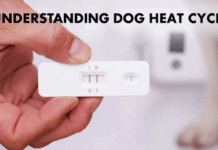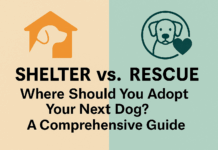Last Updated on June 21, 2023 by Dogs Vets
How to Pet a Dog: Unlocking the Power of Touch
Petting a dog is more than just a simple act of affection. It’s a mutual language of love, respect, and trust between you and your furry friend.
The meaning of petting a dog transcends the physical act, creating a bond that enhances both your lives.
Importantance of petting a dog
Petting a dog can have therapeutic benefits for both humans and dogs. Dogs generally prefer being petted on the chest, shoulder, and base of the tail.
However, touching their ears, paws, end of tail, top of the head, muzzle, or belly could upset them. Physical restraint, such as grabbing the dog’s collar or holding them in place can evoke fear, and they may perceive this as threatening.
Petting can be used as a reward for positive behavior, such as staying calm during greetings, but it might not be sufficient in distracting situations like a dog park2.
When petting a dog you haven’t met before, it’s important to create inviting body language and let the dog approach on their own terms.
Never reach over the top of an unfamiliar dog to pet them; instead, reach in from the side. Also, a new dog might roll over to greet you, but you should avoid petting their belly in this situation as it could make them feel threatened.
The speed and intensity of your touch can also affect a dog’s emotions. A slow, gentle touch with rhythmic strokes in the direction of the dog’s fur is usually well received2
The Art of Petting: Where to Pet a Dog to Relax Them
One might wonder, where to pet a dog to relax them? The answer lies in understanding the comfort zones of a dog.

Dogs generally love being stroked on their chest, the base of their tail, and behind their ears. However, remember that each dog is unique and may have different preferences.
Behind the Ears
Many dogs love being petted behind the ears. This area has a high concentration of nerve endings that make it particularly sensitive. Gentle strokes here can have a calming effect, helping your dog to relax.
Chest and Shoulders
The chest and shoulders are other areas dogs generally enjoy being petted. It’s a non-threatening approach, as you’re not reaching over their head or invading their personal space.
Base of the Tail
The base of the tail is another favorite spot for many dogs. This area, often referred to as the “butt scritch,” can be the key to a blissful pup.
Is Petting a Dog Good for the Dog?
Absolutely! Petting a dog is not only good for the dog, but it’s also beneficial for you. When you pet a dog, it releases a hormone in both of you called oxytocin, also known as the “cuddle hormone.” This hormone promotes feelings of love, bonding, and well-being.
Physical Health Benefits
Regular petting can also help detect any abnormal lumps or bumps on your dog’s body, leading to early detection of potential health issues.
Mental Health Benefits
Petting a dog can alleviate stress and anxiety in dogs. It can help them feel secure and loved, promoting their overall mental well-being.
How to Pet a Stray Dog
Approaching and petting a stray dog requires extra caution. Strays may not have had positive interactions with humans and may react out of fear or uncertainty.
Safety First
Before attempting to pet a stray dog, assess the situation. If the dog shows any signs of aggression, it’s better to stay away.
Slow and Steady Approach
If the dog appears calm, approach it slowly and let it sniff your hand. This gives the dog time to get used to your scent and signals that you’re not a threat.
Gentle Petting
If the dog remains calm after sniffing your hand, you can gently pet it, preferably on the chest or shoulders. Avoid direct eye contact as dogs may perceive this as a threat.
Conclusion
Learning how to pet a dog effectively is an essential skill for any dog lover. It’s not just about physical touch, but understanding and respecting your dog’s comfort zones.
Whether it’s your lifelong furry companion or a stray you’ve just met, proper petting can foster a positive relationship and unlock a world of mutual benefits.
Frequently Asked Questions
1. Can petting my dog help me relax?
Yes, petting your dog can help you relax. The act of petting a dog releases oxytocin, which promotes feelings of relaxation and well-being.
2. How can I tell if my dog enjoys being petted?
Your dog will show signs of enjoyment by leaning into your hand, wagging their tail, or showing a relaxed posture and facial expression.
3. Is it safe to pet stray dogs?
It’s crucial to exercise caution when petting stray dogs. Approach them slowly, allowing them to sniff your hand before initiating any touch. If the dog shows signs of aggression or discomfort, it’s best to stay away.
4. What are the benefits of petting a dog?
Petting a dog has multiple benefits for both you and your dog. It can alleviate stress and anxiety, promote feelings of love and bonding, and help detect potential health issues early on.
5. What are the best places to pet a dog?
While each dog is unique, many dogs enjoy being petted behind their ears, on their chest, and at the base of their tail. Always respect your dog’s comfort zones and preferences.
Fact Check
We hope you enjoyed reading this article. What are your thoughts on the topic?
“At [Dogsvets.com], our goal is to bring you the most accurate and up-to-date information on all things pet-related. If you have any additional insights or would like to advertise with us, don’t hesitate to get in touch.
If you notice any errors or discrepancies in our content, please let us know so we can correct them.
We welcome your feedback and encourage you to share this article with others.”

















